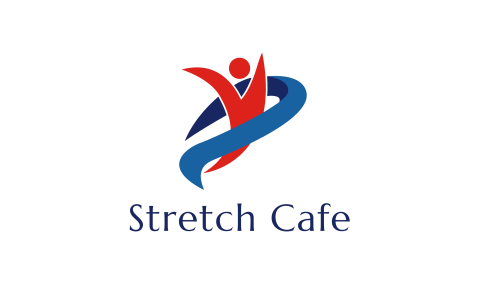Get your Masks on! No Mask No Reading 😜
No Mask No Entry! No Mask No Food! Signs everywhere!
We are being constantly informed by health departments all over the world the importance of face coverings to reduce the spread of Coronavirus. It’s all over the news, internet and everyone’s talking about it.
Let’s embrace it. Before you know it, masks will be a new fashion accessory. It’s not just scarves and boots to coordinate now, put masks in the mix.
A beautiful quote by Quetzal, “If you want people to love you for who you are, take the mask off.” In Current times, this would read, “If you want people to love you for who you are, keep the mask on.”
Ok you all get it! I will move on.
But wearing a mask for long duration is a PAIN! I have been behind a face mask and protective glasses for more than 6 hours while working in clinic with clients and suffer from its consequences most of the days. So are a lot of essential workers, so will a lot of you who will eventually start stepping out as everything starts to reopen gradually. Imagine our front line Healthcare heroes with fully loaded PPEs. Yet another reason to salute them.
Let’s discuss few common discomforts of wearing masks and how to manage them.
The most common complain I hear is “It is so hard to breathe in this.” If you are not used to wearing Masks at all, it is hard. Just walking through a grocery store with the Mask can seem daunting. As world re-opens again, families will step out. Imagine parents having to walk holding kids in arms and masks on. Masks can cause labored breathing while performing mild to moderate strenuous activities in otherwise healthy person. 1
Take few Deep Breaths before you get your mask on and after you take them off. Technical term- Pursed Lip Breathing!

Inhale through your nose for two seconds.Purse your lips like you’re blowing on hot food and then breathe out slowly, taking twice as long to exhale as you took to breathe in
The ear loops of the masks can induce tension in muscles of your jaw and face and adds to the tension of neck muscles. When you take off your mask, gently massage the Masseter Muscle.

Place 2-3 fingers on your cheeks, on both sides of the jaw. Right in front of your ears. Clench your teeth to feel your masseter muscles tensing up. Unclench, and gently massage the muscle with kneading motions for 1-2 minutes.
Add a quick stretch of that jaw muscle- With your fingertips apply gentle pressure on the muscle, and slowly open your mouth as wide as possible while keeping the tip of your tongue on the roof of your mouth. Hold for 5-10 seconds.
Forced inhalation while breathing is quite frequent with the mask on. It changes the normal breathing pattern. You end up using your accessory breathing muscles more than you normally would. These accessory breathing muscles are located around your neck- Scalene muscles and Sternocleidomastoid 2, 3 (mouthfull? Let’s say SCM). Increased tension in these muscles not only causes neck pain and stiffness, it can cause jaw tightness. Stretch these neck muscles after massaging the masseter muscles of the jaw.

Hook fingers over your right collar bone. To stretch your right scalene, begin by tilting your head gently towards your left shoulder. Go as far as you can go comfortably. Then gently and slowly rotate your head towards the right, so that you are looking slightly over your right shoulder. Hold this position momentarily. The last part is to then extend your chin or tilt your chin up just slightly, so that you feel a pulling sensation under the front side of the right side of your neck, in your anterior scalenes. Hold this position for approximately 30 seconds. Repeat on the opposite side, reversing the instructions.
If you are mask-less right now as you are reading this, Stand up and look at your toes. Now put your mask on and try doing the same thing. Or try writing a few sentences. Did you notice you had to tilt your head down and forward more to look at your toes or to write. Masks obscure the lower visual field forcing you that extra head tilt forward and down to accomplish your task. Or some people might compensate from their mid back and lower back. If you have read my Home office ergonomics post, you are aware what that extra head tilt does to your cervical spine. If you have not, head over there to read the fun part.
Obscured visual field, Jaw and neck muscles tension will lead to headaches. That’s my biggest complain.
All the exercises in How to Avoid a Stiff neck post are extremely helpful in this situation as well. Especially chin tucks, Neck extensions.
Prepare yourself and follow few simple steps to manage the unintended consequences of wearing masks.
- Try different masks and choose the one in which you can breath easily
- Look for visual field interruptions that can lead to compensatory postures and movements
- Take few No-Mask breaks (while physically distancing) and stretch and breathe as discussed above.
- Person E, Lemercier C, Royer A, Reychler G. Effet du port d’un masque de soins lors d’un test de marche de six minutes chez des sujets sains [Effect of a surgical mask on six minute walking distance]. Rev Mal Respir. 2018;35(3):264‐268. doi:10.1016/j.rmr.2017.01.010
- Braun SR. Respiratory Rate and Pattern. In: Walker HK, Hall WD, Hurst JW, editors. Clinical Methods: The History, Physical, and Laboratory Examinations. 3rd edition. Boston: Butterworths; 1990. Chapter 43. Available from: https://www.ncbi.nlm.nih.gov/books/NBK365/
- da Fonsêca JDM, Resqueti VR, Benício K, Fregonezi G, Aliverti A. Acute Effects of Inspiratory Loads and Interfaces on Breathing Pattern and Activity of Respiratory Muscles in Healthy Subjects. Front Physiol. 2019;10:993. Published 2019 Aug 2. doi:10.3389/fphys.2019.00993


